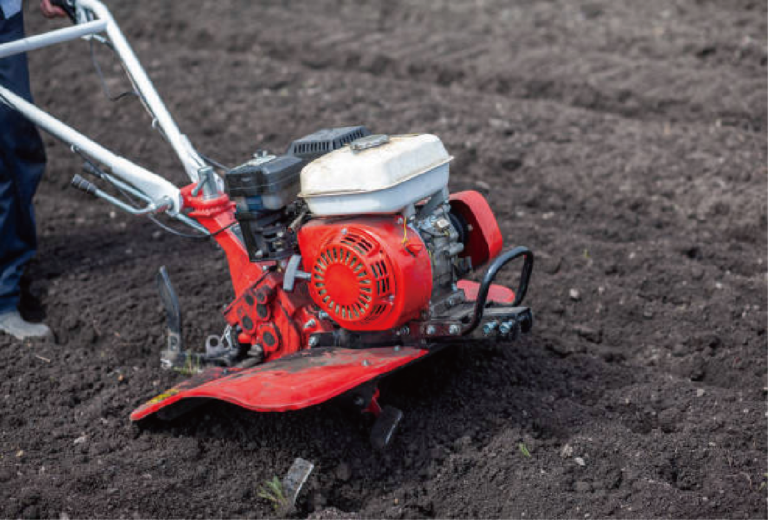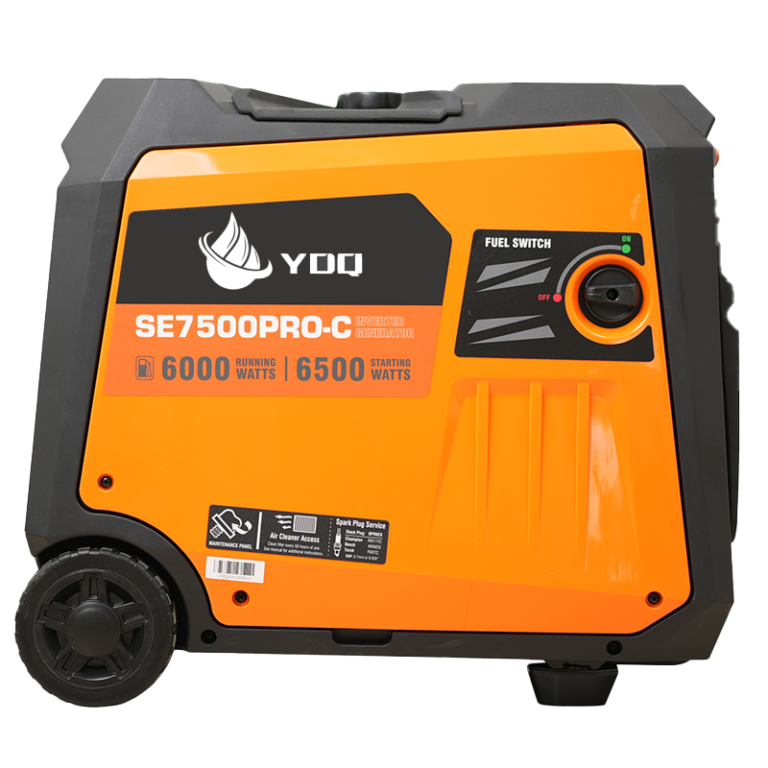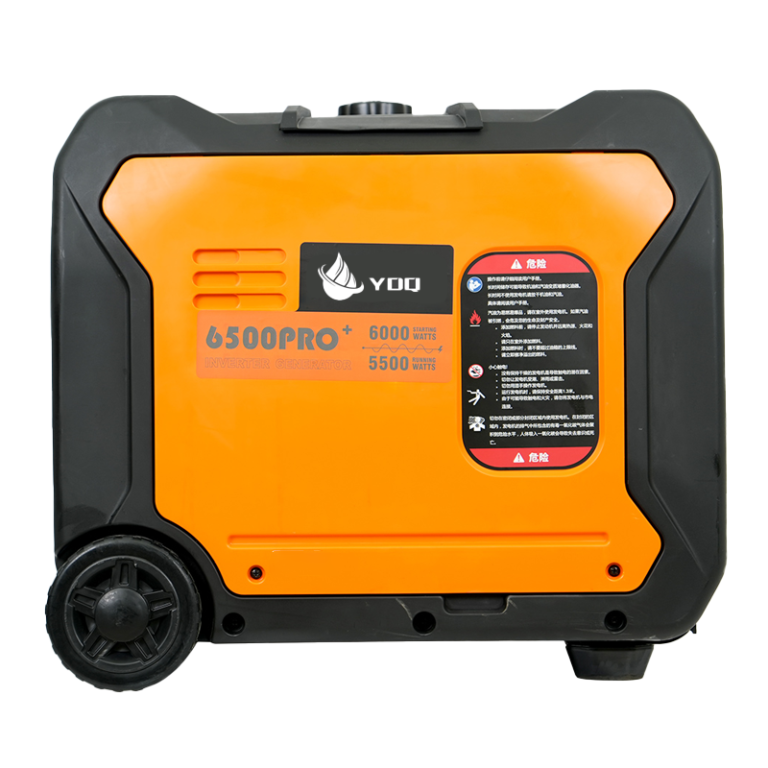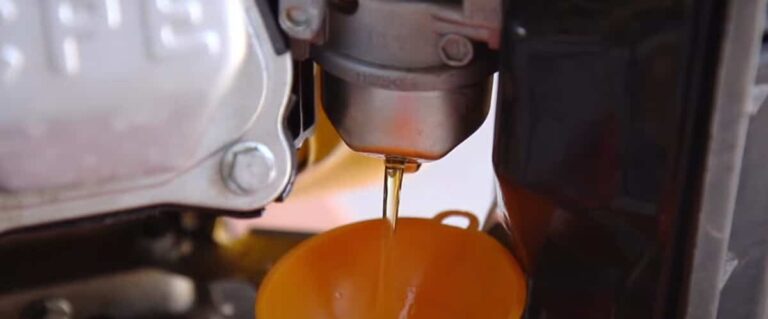What is a self priming pump?
The self-priming pump is a self-priming centrifugal pump. It has the advantages of compact structure, convenient operation, smooth operation, easy maintenance, high efficiency, long life, and strong self-priming ability. There is no need to install a bottom valve in the pipeline. Before starting work, you only need to ensure that there is a certain amount of pilot liquid stored in the pump body. Different liquids can use self-priming pumps made of different materials.

The working principle of a self-priming pump is that the pump casing is filled with water (or there is water in the pump casing itself) before the pump is started. After starting, the impeller rotates at high speed to cause the water in the impeller channel to flow to the volute. At this time, a vacuum is formed at the inlet, causing the water inlet check door to open. The air in the suction pipe enters the pump and reaches the outer edge through the impeller channel.
The types of self-priming pump
The basic types of water pumps include centrifugal pumps, axial flow pumps, mixed flow pumps, self-priming pumps, submersible pumps, deep well pumps and plunger pumps.
centrifugal pump
Centrifugal pumps are the most common type of water pumps. They throw liquid out through centrifugal force. They are suitable for transporting clean water, sewage, chemical liquids and other occasions with small and medium flow rates and medium to high lifts.
Applicable scenarios: water supply, water supply and drainage, air conditioning systems, industrial circulation, etc.
Axial flow pump
Axial flow pumps are pumps in which the liquid flow direction is parallel to the axis. They are suitable for conveying clean water, sewage, chemical liquids and other large flow and low head applications.
Applicable scenarios: drainage, sewage discharge and farmland irrigation. Commonly used in drainage and irrigation projects of rivers, lakes and reservoirs.
Mixed flow pump
Mixed flow pumps are between centrifugal pumps and axial flow pumps. They have the head characteristics of centrifugal pumps and the large flow characteristics of axial flow pumps. Suitable for medium flow and medium head situations.
Applicable scenarios: urban water supply and drainage, industrial circulating water, etc.
Self-priming pump
The self-priming pump can generate negative pressure in the pump body and automatically suck in liquid. Suitable for pumping shallow liquids, such as clean water, sewage, oil, etc.
Applicable scenarios: automatic household water supply, farmland irrigation, sewage treatment, etc.
Submersible pump
The submersible pump works completely immersed in liquid and is suitable for groundwater extraction, drainage, and sewage treatment of sewage, sludge, oil-water separation, etc.
Applicable scenarios: groundwater intake, sewage treatment, ship drainage, etc.
Deep well pump
Deep well pumps can draw water from deep wells or lift water sources, and are suitable for deep well water intake, water source lifting, irrigation, etc.
Applicable scenarios: agriculture, industry and civil fields.
Plunger pump
Plunger pumps draw and discharge liquid through the up and down movement of a plunger. It is suitable for conveying high-viscosity liquids, chemical liquids and other high-pressure, low-flow occasions.
Applicable scenarios: high-pressure cleaning, spraying, etc. Commonly used in high-pressure cleaning, petrochemical, metallurgy, pharmaceutical and food fields.
The structure of the self-priming pump
There are many structural types of self-priming pumps, among which molten salt pumps, vacuum pumps, submersible pumps, metering pumps, gear pumps, corrosion-resistant pumps, acid-resistant pumps, and fire pumps flow in the direction of rotation. Then it merges with the water flowing from the right return hole and flows along the volute.
Because the liquid continuously impacts the blades in the volute and is constantly crushed by the impeller, it is strongly stirred and mixed with the air to generate a gas-water mixture, which continues to flow so that the gas and water cannot be separated. The mixture is stripped off by the partition tongue at the volute outlet and enters the separation chamber along the short tube. The air in the separation chamber is separated and discharged from the outlet pipe, while the water still flows to the outer edge of the impeller through the left and right return holes and mixes with the air in the suction pipe. By repeating this cycle, the air in the suction pipe is gradually exhausted, allowing water to enter the pump, completing the self-priming process.
The sewage pump self-priming oil pump is the same as the diaphragm pump screw pump and gear oil pump. The only difference is that the return water does not flow to the outer edge of the impeller, but to the impeller inlet. When starting an internally mixed self-priming pump, the return valve at the front and bottom of the impeller must be opened to allow the liquid in the pump to flow back to the impeller inlet. Under the action of the high-speed rotation of the impeller, the water mixes with the air from the suction pipe to form an air-water mixture and is discharged to the separation chamber. Here the air is exhausted and water is returned from the return valve to the impeller inlet. The self-priming pump repeats this process until the air is exhausted and water is sucked in to the internal-mixing self-priming pump. The working principle is the same as the external-mixing self-priming pump.
The self-priming height of a self-priming pump is related to factors such as the front seal gap of the impeller, the number of revolutions of the pump, and the liquid level height of the separation chamber. The smaller the impeller front seal gap, the greater the self-priming height, which is generally 0.3~0.5 mm. When the gap increases, in addition to the decrease in self-priming height, the pump head and efficiency decrease.
The self-priming height of the pump increases with the increase of the impeller’s peripheral speed u2, but when it reaches the maximum self-priming height, the number of revolutions increases but the self-priming height no longer increases. At this time, the self-priming time is only shortened; when the number of revolutions When it decreases, the self-priming height decreases. When other conditions remain unchanged, the self-priming height also increases with the increase of water storage height (but it cannot exceed the optimal water storage height of the separation chamber). In order to better mix air and water in a self-priming pump, the impeller must have fewer blades to increase the pitch of the cascade; and a semi-open impeller (or an impeller with a wider impeller channel) should be used, which is more efficient. It is convenient for the return water to penetrate deeply into the impeller cascade.
How does a self-priming pump work?
Self-priming pump is in the pump memory full of water, or the pump casing itself in the case of water, the impeller rotates to produce centripetal force, the liquid flows along the channel to the volute. In the pump inlet to form a vacuum, so that the inlet check door open, suction intake pipe air into the pump, in the impeller groove, air and radial back to the hole in the water mixing, together with the groove along the snail shell flow, into the separate room, in the separate room, air from the liquid from the separate into the liquid from the new back to the impeller, so that the cycle repeats until the suction pipeline in the air exhaustion, so that the liquid into the pump to complete the self-priming process.

What is the advantage and disadvantage of self-priming pump?
Advantages of self-priming pumps
The main part is located above the water surface, making it easy to maintain. The load distribution is relatively uniform and the mechanical load per unit area is small. The lifting height is small and the height of the pump room is low, so there is no need to move the power machine during disassembly. Water lubricated bearings are less or not needed. The total cost of self-priming pump, transmission device and power machine is cheaper.
Disadvantages of self-priming pumps
Large installation area and large machine room area. It needs to be started with water for the first time, which is complicated to operate and inconvenient for automation. The water inlet pipe sealing requirements are strict and air cannot be sucked into the pump body. The radial load requires high reliability of the bearings. When the water level in the inlet pool is high, the motor needs protection. If the water level in the inlet pool is too low and exceeds the effective suction range of the self-priming pump, it will not be able to suck water.
What application of self-priming pump?
Self-priming pumps are widely used in various fields due to their special working principles and superior performance.
Industrial areas
Industrial drainage: used to discharge factory wastewater, sewage, waste liquid, etc.
Process circulation: used to circulate and transport industrial fluids, such as acid and alkali liquids, solvents, etc. in chemical production.
Cooling system: used in the cooling cycle of industrial equipment, such as cooling water circulation, cooling tower circulation, etc.
Agriculture
Farmland irrigation: used in farmland irrigation systems to provide water to crops.
Agricultural drainage: used to drain irrigated land and remove accumulated water in farmland.
Achitechive
Building drainage: used in the drainage system of buildings, including basements, underground garages, sewage discharge, etc.
Fire water supply: As part of the fire protection facilities, it is used for water supply and fire protection systems.
Water conservancy project
Sewage treatment: used in the treatment system of sewage treatment plants to transport sewage, sludge, etc.
Pump station water delivery: used to transport water sources to different areas, such as urban water supply, irrigation, etc.
Drinking water:
Household drainage: used in household sewage treatment systems, including sewage discharge from toilets, toilets, bathrooms, etc.
Drinking water supply: In some areas, self-priming pumps are also used to provide drinking water supply, such as outdoor camping sites, remote areas, etc.
Medical industry:
Hospital drainage: used in hospital sewage drainage systems, including sewage treatment in operating rooms, decontamination rooms, etc.
Medical equipment water supply: used to transport water to medical equipment, such as operating tables, toilets, medical equipment cleaning, etc.
Environmental Engineering
Sewage treatment: used in urban sewage treatment plants, industrial wastewater treatment plants, etc. to transport sewage to treatment facilities for treatment.
Environmental protection project drainage: used in drainage systems in environmental protection projects, such as by-product discharge during sewage treatment.

How to maintain self-priming pump daily?
Maintenance
Clean the inside of the pump body and the suction port regularly to avoid scaling and accumulation of debris in the pump. This maintains pump flow and pump efficiency, extending pump life. If there is excessive scale and debris accumulation in the pump body, professional cleaning agents and tools can be used to clean it.
Replace the sealing ring of the self-priming pump every year to ensure sealing performance. Regular replacement of sealing rings can prevent water leakage and leakage in the pump and protect the motor and bearings. It should be noted that when replacing the sealing ring, the corresponding sealing ring model must be selected to avoid using inappropriate sealing rings that may cause water leakage and leakage in the pump.
Regularly check the motor bearings of self-priming pumps to ensure they are lubricated and operating properly. Regularly checking and lubricating motor bearings will prevent pump noise and failure during use. If the motor bearings are poorly lubricated, they need to be refueled or replaced. It should be noted that when refueling, you must choose the appropriate lubricant and follow the lubricant instructions.
Regularly check the electrical system of the self-priming pump to ensure that the wires are well connected and the switches are normal. Checking the electrical system of the self-priming pump and maintaining it in time can avoid safety hazards caused by aging wires and poor wiring. It should be noted that if the electrical system fails, do not repair it yourself. You should ask a professional to handle it.
Troubleshooting
The self-priming pump cannot start
Check whether the power supply is normal and whether the wires are in good contact. If the power supply is normal and the wires are in good contact, you need to check whether the motor is faulty or damaged. If the motor fails or is damaged, it will need to be replaced.
No water flows out after the self-priming pump is started
Check whether there is any debris blocking the pump body and whether there is air leakage at the suction port. If there is debris blocking the pump body, you can clean the inside of the pump body. If there is air leakage from the suction port, you can replace the sealing ring or replace the suction port. It should be noted that when replacing the suction nozzle, the corresponding suction nozzle model must be selected to avoid water leakage and leakage of the pump caused by the use of inappropriate suction nozzles.
The self-priming pump is noisy
Check whether the motor bearings are well lubricated and whether they need to be replaced. If the motor bearings are poorly lubricated, they need to be refueled or replaced. If the motor bearings are damaged, they need to be replaced. It should be noted that when replacing the motor bearings, the corresponding bearing model must be selected to avoid using inappropriate bearings that may cause pump noise and failure.
Self-priming pump leaks
Check whether the sealing ring is worn or loose and needs to be replaced. If the sealing ring is damaged or loose, it needs to be replaced in time. It should be noted that when replacing the sealing ring, the corresponding sealing ring model must be selected to avoid using inappropriate sealing rings that may cause water leakage and leakage in the pump.














